Newsletter June 2021

Welcome to our June Newsletter 2021
Thank you for supporting!
Enjoy this month articles.
Enjoy the sun and nature 😊
Helen & Filipa
S
N
A
P
SHOT

Monchique

Town (since 1773)
Population: 6 045 (Census 2011)
Area: 395, 30 Km2
Monchique is a small town placed between 2 mountains (Fóia and Picota), it is the highest town in the Algarve at 485 metres, there can be found the highest place in the Faro District, Fóia, 902 metres hight. Monchique is surrounded by Odemira in the North, Portimão in the South, Lagos in the Southwest and Aljezur in the West. Monchique is the capital of the county and is divided into 3 parishs: Monchique, Alferce and Marmelete.
The first historical information about Monchique, started with the Romans, which named this place “Mons cicus” meaning “Sacred Mountain”, referring to Caldas de Monchique and the medicinal properties of its waters, there they built a thermal house. Although the human presence in the area is much older, in the Neolithic (V bC), confirmed by the historical artefacts found there. The area also was occupied by the Moorish during the first half of the IX century, they named it after the Romans “Munt Saqir” (Sacred Mountain).
Little is known about Monchique during the Middle Age and the New Age, the earthquake of 1755 caused significant damage to buildings and probably destroyed some of the historical archives. Some castles around Monchique area are mentioned when the King Sancho I conquered Silves to the Moors in 1189, at the time it belonged to Silves county.
During the XV century, 1495, the king, John II, chose the thermae, Caldas de Monchique, to recover from his health problems and during the XVI century, the King Sebastião visited Monchique, evidencing the importance of the area. Economically, activities such as weaving (wool and linen), basketry and chestnut wood, were important for the development of the area. In1773, Monchique was elevated to town status by King José and was detached from Silves County.
The area of Monchique is part of a microclimate and the weather conditions are different from the rest of the Algarve (more humid and cooler) which makes possible to find some flora, typical from northern areas. Despite the wildfires which destroyed part of the natural environment, it is still a place that is worth discovering, with typical buildings, dishes, and wildlife.
IFO’s – Identified Flying Objects…

Provence Hairstreak
(Tomares ballus, Fabricius, 1787)
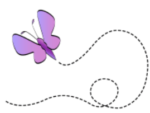
Morphology: It is a small butterfly from the Lycaenidae Family, with a wingspan between 28 to 30 mm. The upper side of the wings are dark brown in males and have large orange patches in females; the underside of forewings is dark brown with an orange patch in the middle with black spots, similar in males and females and the hindwings are dusted with a green colour. The butterflies fly from February to April.
Habitat: Open, dry flowery habitats, low-growing vegetated areas, pastures, farmland, and open scrublands.
Distribution: Iberian Peninsula, North Africa, and Southern France.
Notes: The larvae feeds on grasses of the Fabaceae Family (Medicago sp, Lotus sp, Astragalus lusitanus, Dorycnium sp and Anthyllis sp). The species pupates near the ground and hibernates during the winter. This species is locally endangered mainly due to intensive agriculture.
Tweet… Tweet…
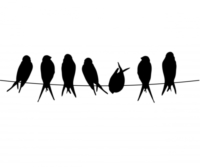
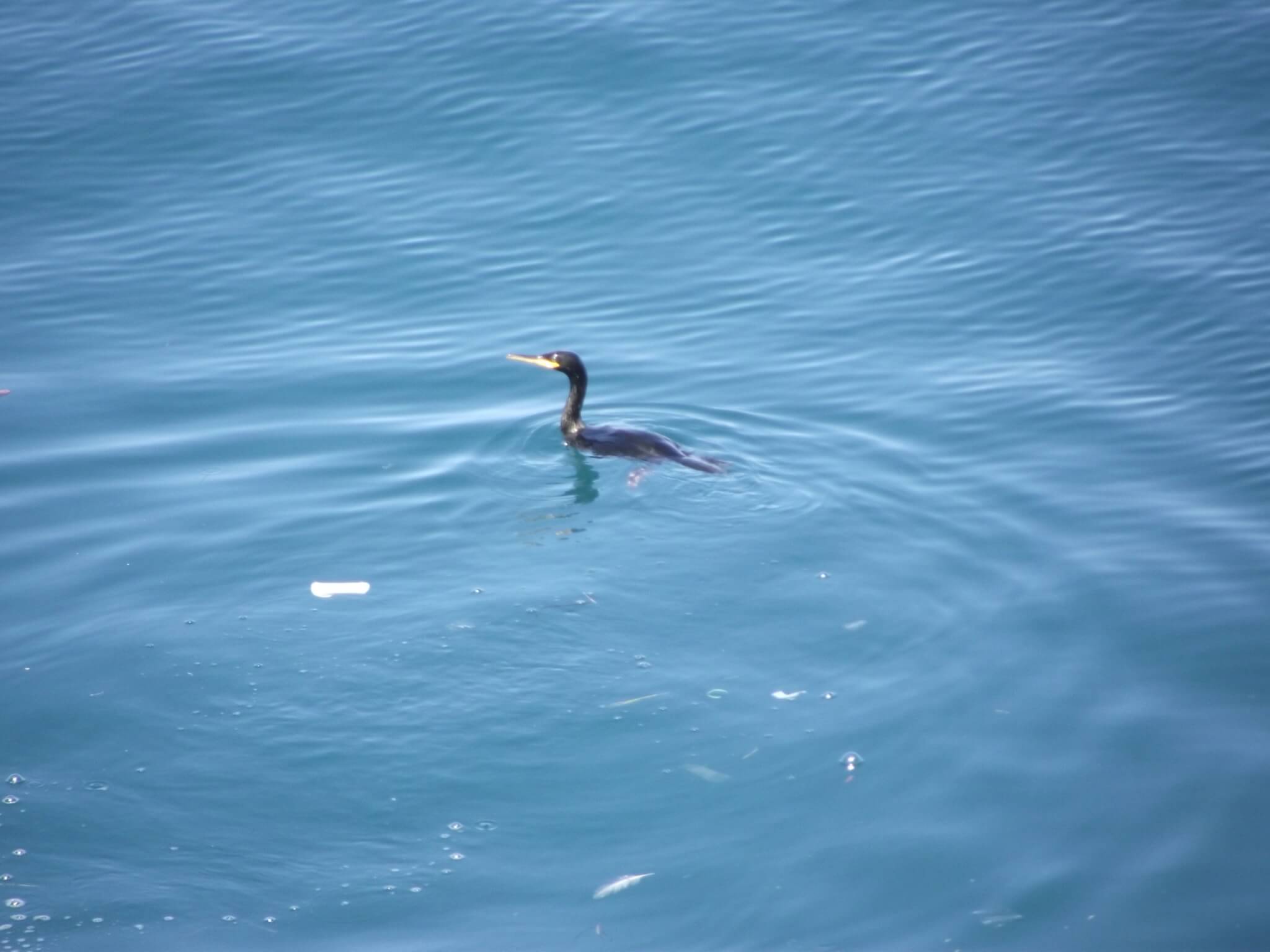
Cormorant
(Phalacrocorax carbo, Linnaeus, 1758)
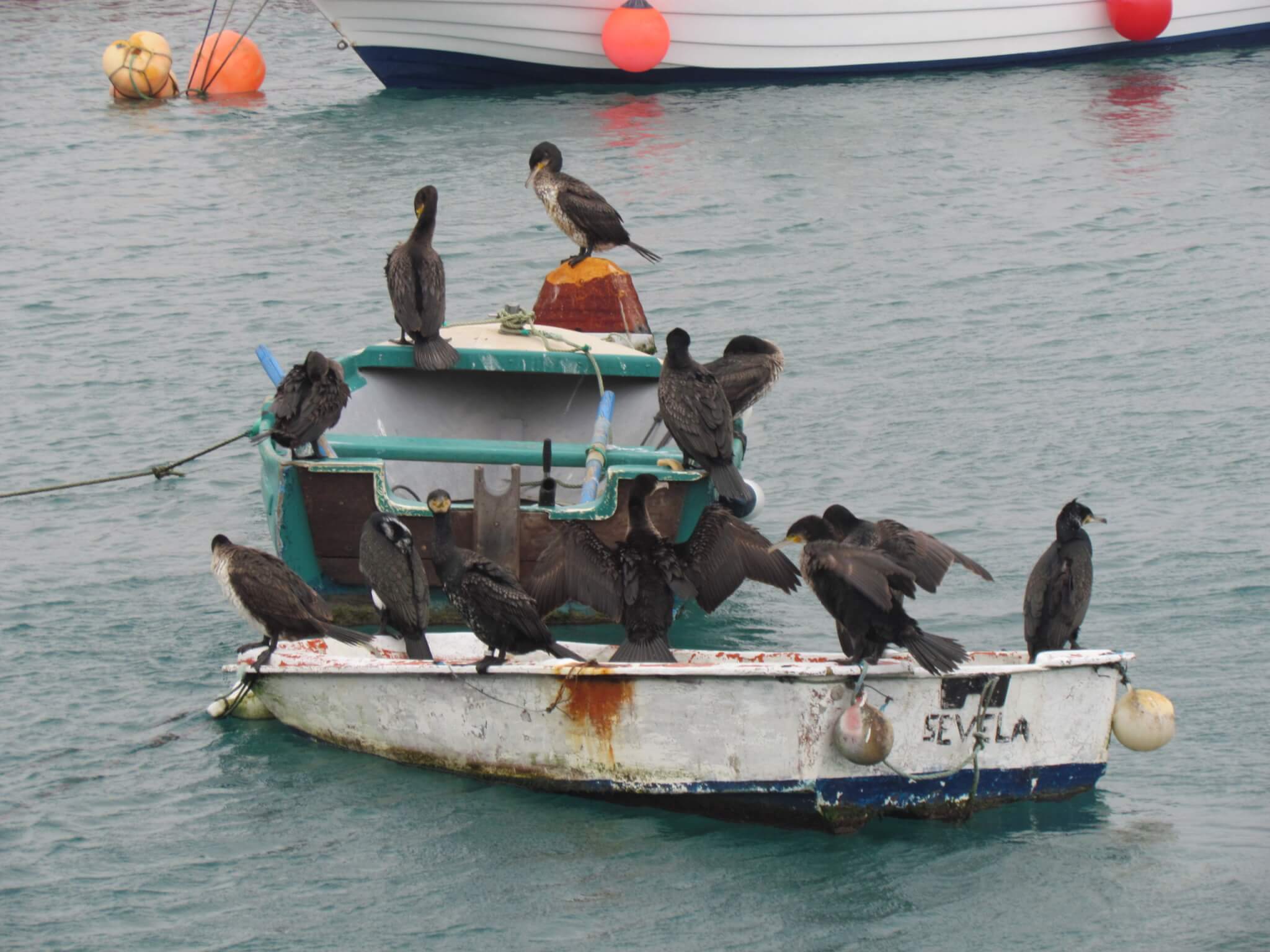
Identification: It’s a large aquatic bird from the Phalacrocoracidae Family, with a wingspan between 121 and 149 cm. The neck is large and thick, the plumage is black with blue greenish gloss; the bill is strong and yellow, the wings are long. In early breeding season adults have a white patch on the thighs and throat. Juveniles are whitish underneath. Males are usually bigger than females.
Habitat and Ecology: Occurs in a wide variety of habitats, like estuaries, coastal lagoons, reservoirs, rocky coasts, freshwater lakes, and rivers. Captures its prey diving and the diet consists mainly on fish. Flies low over the water and rests in the sun with open wings.
Distribution: Widespread in all the continents except South America and Antarctic. The European northern populations winter in the Mediterranean region. In Portugal it is a common winter bird along the South coast. Since 2007 it is breeding in the Alqueva dam.
Threats: Least Concern (LC) in the International Union for Conservation of Nature (IUCN) red list. The population trend seems to be increasing. This species is not well appreciated by men, it is accused of causing a negative impact in fish populations, special fish farms.
DID YOU KNOW? 
- In March 2019 some of the path around the Ria de Alvor estuary, collapsed into the sea, a wall crumbled. The area is known as Espargueira and it is famous for the shell fishermen and of course for birds. When the main wall collapsed a lot of seawater started to flood the marsh and caused the rise of the water levels (see Newsletter February 2020, section Did you Know). At the beginning just the central marsh was flooded, as time passed, the path to the salt pans got destroyed and the fields north also got flooded, this caused major problems on the road along the marsh which is the access for some of the residents. During the high tide, sometimes it was not possible to use the road. The access to the salt pans has been impossible since March 2020. In September 2020, the work started to repair the damage in the whole area. The road accessing the salt pans is now finished and they are still reconstructing the main wall. The area inside of the wall, the marsh, was used by some birds for breeding. Since the water levels were so high, there were not suitable places for the breeding of Kentish Plovers and Black Wing Stilts. Although the adjacent areas, that were dry the most part of the year, were inundated and were used for wintering birds. A Purple Heron was seen during spring and the Great White Egret stayed in the area more than a year, it was possible to see Bluethroats from very close and this year the number of Audouin’s Gull in the area increased significantly A Rocha does a weekly monitoring of the waders and the access to some areas was limited. Due to the changes in the water level and the access restrictions it is hard to understand if these changes benefitted the birds. This season we can already confirm the breeding of Kentish Plovers in the salt pans, but the Black Winged Stilts almost disappeared from the area. One thing is for sure, the salt pans and part of the marsh were inaccessible and were fewer disturbances by man and this benefited the birds and wildlife in general. We must wait now for the conclusion of the main wall reconstruction to see if the changes in water levels and disturbance will affect bird communities.
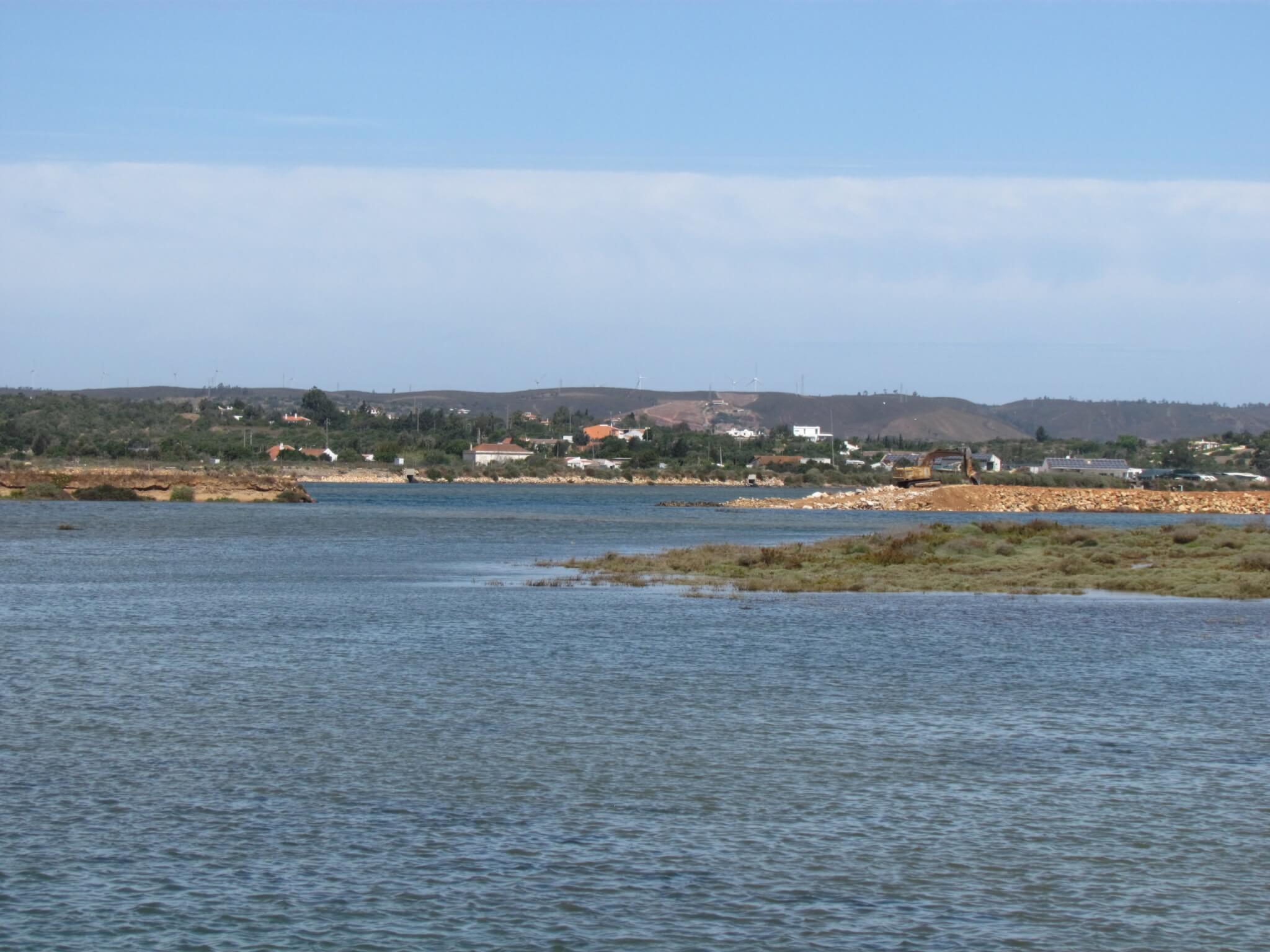


Photos by Guillaume Réthoré
-
On the 8th of May A Rocha Portugal Team took part in the John Stott Memorial Birding Day. The “Big Day” was a race to see the most bird species. We did a Carbon free race, walking along Mexilhoeira Grande Parish and we observed 49 bird species! It was a lovely day with a lot of walking! Guillaume Réthoré also join this event by birdwatching in the Alentejo!

-
May was the month of juveniles! At our ringing station we caught some juveniles: Goldfinch (Carduelis carduelis), Sardinian Warbler (Sylvia melanocephala), Blackbird (Turdus merula) and House Sparrow (Passer domesticus), Great Tit (Parus major), Blue Tit (Cyanistes caeruleus), Kingfisher (Alcedo athis).
On the 29th of April a Rocha International organised a webinar titled “Preventing extinction” with Dr Simon Stuart, Executive Director of A Rocha International. See below.
Simon and Anne Stuart visited A Rocha Portugal, last time in May 2018 and told us a little about their experience 😊
Simon: I am director of Strategic Conservation Synchronicity Earth, I raise funds. I am also a herpetologist and ornithologist. This is my second visit to Cruzinha, first time was in 2003. The Azure Winged Magpies are now much more common.
Anne: Teacher of Biology in a secondary school. I also run a conservation group in school where pupils choose to do conservation once a week. I enjoyed seeing some parasitic flowers (the broom rapes) and the flamingos down in the Estuary.
We met the Harrises in Switzerland in 1999 and I (Simon) was ARI trustee from 2001 to 2008 and again in 2017 until now. Ann is a ARUK (A Rocha United Kingdom) trustee since 2013. We are now on are way to the Forum for the International A Rocha, in Sintra. Ann always wanted to visit here, so we got this opportunity!
A Rocha helped us to connect our Christian faith with our Scientific interests and our love for nature. Here is a place of history for A Rocha – very peaceful like the grandfather of all A Rocha groups: a beautiful and peaceful place.


 I love nature! I walk around, take pictures, watch birds, butterflies, and plants! Enjoy the quietness and the sound of nature. We all know our world is not a perfect world… We humans destroy a lot and we are the major cause of species extinction and habitat loss! But on the other, hand we can also do a lot! The collected data on birds, butterflies, moths, plants are mostly done by volunteers, and this is precious and important work. The only way to conservation is knowledge, and knowledge comes with monitoring and doing surveys! Citizen science is very important! We all can share and contribute with our knowledge and take an important role for the protection and conservation of species and habitats! Nowadays the internet makes it very easy to share information, there are several platforms for sharing wildlife observations like the ebird, biodiversity4all and the inaturalist and several groups on facebook that help us to identify and spread the word, making more people aware of our importance in citizen science! You can also become a citizen scientist! 😊
I love nature! I walk around, take pictures, watch birds, butterflies, and plants! Enjoy the quietness and the sound of nature. We all know our world is not a perfect world… We humans destroy a lot and we are the major cause of species extinction and habitat loss! But on the other, hand we can also do a lot! The collected data on birds, butterflies, moths, plants are mostly done by volunteers, and this is precious and important work. The only way to conservation is knowledge, and knowledge comes with monitoring and doing surveys! Citizen science is very important! We all can share and contribute with our knowledge and take an important role for the protection and conservation of species and habitats! Nowadays the internet makes it very easy to share information, there are several platforms for sharing wildlife observations like the ebird, biodiversity4all and the inaturalist and several groups on facebook that help us to identify and spread the word, making more people aware of our importance in citizen science! You can also become a citizen scientist! 😊
Filipa
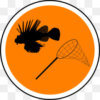 EXOTIC SPECIES
EXOTIC SPECIES
African Flag (Chasmanthe floribunda, (Salisb.) N. E. Br.
Clade: Angiosperms, Monocots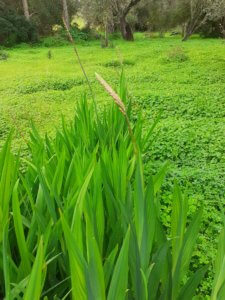
Family: Iridaceae
Origin: Cape Province, South Africa
Height: up to 1.2 metres
The African Flag is a perennial herbaceous plant, sprouting from a corm (underground stem); the leaves grow clustered together at the base of the plant, large (between 80 and 100 cm long), sword-shaped, and dark green. The flowering stems are long with elongated clusters at the top, with 20 to 30 flowers, the flowers grow in two ranks along the spike, the colour is orange or red (occasionally yellow), tubular shape and one petal lobe longer than the others. The fruit is a globous capsule with orange seeds inside. The plant emerges from the soil in autumn, flowers at the beginning of spring and is dormant in summer.
On its natural range, Cape Province in South Africa, the plant grows in coastal areas or near, in rocky or coastal mountains, prefers sandstone and granite soils; requires a cool temperate growing condition, with some water in winter and dry in summer. In some temperate areas where it is naturalized grows along roadsides, disturbed and waste areas, grasslands, coastal sites, and waterways.
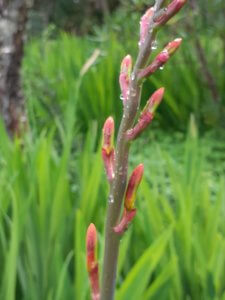 The plant reproduces by seeds and vegetatively by corms, these are spread in damped garden waste and with soil. Seeds are also dispersed by birds and water.
The plant reproduces by seeds and vegetatively by corms, these are spread in damped garden waste and with soil. Seeds are also dispersed by birds and water.
The African Flag is use as ornamental purposes along the temperate areas, including the Mediterranean regions; this plant is naturalized in Southern USA and Southern Australia, where it is considered a significant environmental weed, having a negative impact on native plants.
In Portugal this plant is not considered an invasive species, although it is listed as casual but with invasiveness potential. The African Flag is already common along roadsides and waterways.
POPPED UP

Family: Thymelaeaceae
Identification: It is an evergreen shrub, up to 2 metres heigh. The branches grow upright and are flexible, slender with leaves at the top. The leaves are lanceolate, dark green and leathery. The flowers are small, whitish, fragrant, and grow in terminal clusters; the fruits are red round drupes. Flowers at the end of spring and summer.
Habitat and distribution: Shrub lands, Cork oak woodlands, pine forests, in rocky and poor soils. Prefers sunny and dry areas. Native from the Mediterranean region: southern Europe, North Africa, and Middle East.
Notes: All parts of the plant are poisonous; it is considered one of the most poisonous plants in Europe. The skin contact with the sap can cause dermatitis. In Portugal it has been illegally used for river fishing, poisoning the fish.

Flax-leaved Daphne (Daphne gnidium) (L.)
DATES TO REMEMBER

1st June - Children’s Day
3trd June – Corpus Christi (National Holiday)
3rd, 10th, 17th, 24th June- Cruzinha Bird ringing display & Moth Talk (10.15am to 12 am). Book here
5th June – International Environment Day
10th June - Portugal Day (National Holiday)
13th June - Popular Saint Day – Saint António (Lisbon holiday)
24th June - Popular Saint Day – Saint Pedro
29th June - Popular Saint Day – Saint João (Porto holiday)
Thank you for supporting the Friends of A Rocha Portugal

Dr Roy Rodrigues
Av. Do Brasil, Qta das Palmeiras, Lt P2, R/c A, 8500-299 Portimão
(+351) 282180683
royaldente@gmail.com

Sítio da Amoreira, Lote 12,
Alvor, 8500-045 Portimão
(+351) 282412562/ 925433047
www.transfair.com.pt
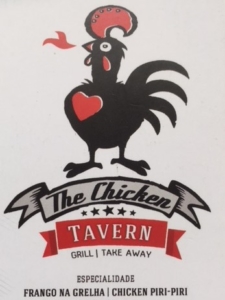
Urbanização Mar e Serra n° 47, Alvor
8500 - 783 Portimão
(+351) 911597735
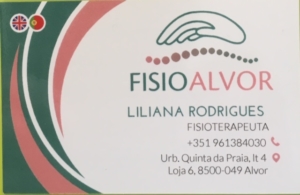
Physiotherapy, Massages (relaxation, sports, therapeutic)
Other therapies
Beauty (manicure, pedicure, hair removal, facials)
Open Monday to Friday
Thought of the month 
“In order not to make offenses and have happy days, don't say everything you think but think about everything you say.” António Aleixo (1899-1949, Portuguese traditional poet).

LETS BE GREEN - LETS BE GREEN - LETS BE GREEN 
One of the biggest environmental problems is the destruction of the tropical forests! According to a recent report of WWF (World Wildlife Fund), the European Union (EU) is one of the biggest importers of products related with tropical deforestation, like soya, palm oil, beef, cocoa, and coffee.
What to do?
- Avoid consuming soya products
- Avoid consuming palm oil products
- Reduce the consume of beef
- Choose products with the label “CO2 Neutral”
- Choose “Bio” products
LETS BE GREEN - LETS BE GREEN - LETS BE GREEN
Common Bird Census (CBC)
The Common Bird Census is a long-term monitoring breeding bird program. The data obtained are important to define territorial planning and conservation measures. This program takes place all over Europe with similar methodology and is used to produce indicators and for the European Union to stop the decline of biodiversity.
The Common Bird Census ran in the UK from 1962 to 2000 and was replaced in 1994 by the Breeding Birds Survey (BBS). Initially the program was aimed to provide information on farmland bird population related to agricultural intensification and was the first national breeding bird scheme in the world, done mainly by volunteers.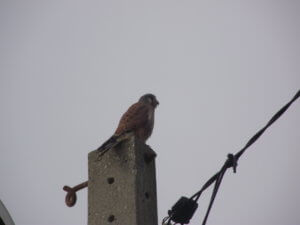
In Portugal this program is organised by SPEA and started in 2004, done mainly by volunteers. A Rocha Portugal is taking part in this survey since the beginning. The survey period happens between the 1st of April and the 15th of June, two visits need to be made during this period. The sampling unit consist on a UTM square 10X10 km, each square has 20 random points spread on the study area, the points should be chosen according to the different habitats. At each point a listening is done every 5 minutes and they are registered, the birds seen, and heard during this period.
The results of this study in 2019 revealed that from the 170 common species found in Europe, 67 are declining and these are mainly common farmland species. Some of the species in decline are: Common Cuckoo (Cuculus canorus), Common Kestrel (Falco tinnunculus) and House Martin (Delichon urbicum). More information here.
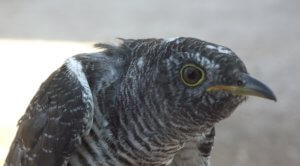 In Portugal there were 240 recorded species between 2004 and 2019 during the Common Bird Census. The most abundant specie is the House Sparrow (Passer domesticus) and the Rock Dove (Columba livia). Among the farmland birds with negative population trend considered in moderated decline are the Iberian Grey Shrike (Lanius meridionalis), the European Bee-eater (Merops apiaster) and the European Serin (Serinus serinus). More information here (only available in Portuguese).
In Portugal there were 240 recorded species between 2004 and 2019 during the Common Bird Census. The most abundant specie is the House Sparrow (Passer domesticus) and the Rock Dove (Columba livia). Among the farmland birds with negative population trend considered in moderated decline are the Iberian Grey Shrike (Lanius meridionalis), the European Bee-eater (Merops apiaster) and the European Serin (Serinus serinus). More information here (only available in Portuguese).
Since 2018. Guillaume Réthoré, the field guide of A Rocha Life and volunteer in A Rocha Portugal since 2010, is the responsible of the Common Bird Census in the South of Portugal. If you know a little bit about birds and you would like to take part on this project, please email to: cacsul@gmail.com
Sustainability Champions 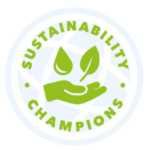
Sustainability Champions from around the World– Looking at ways to curb pollution and waste management.
We would like to thank Daniel Hartz, the founder of Sustainability Champions for giving us the permission to share this information.
Aisa Mijeno from Manila in the Phillipines is an engineering professor and she creates lamps that run on saltwater, her aim is to provide hundreds of lamps to families with no electricity. Homes without power sources can now light up their nights using two main components that can be found in every kitchen – salt and water!
SALt (Sustainable Alternative Lighting) – an alternative lighting system that doesn’t use batteries or harmful chemicals like kerosene to work.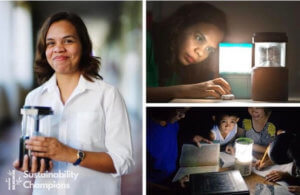
This Electrochemical LED lamp works by dissolving two tablespoons of salt in a glass of water- a saline solution which functions as an electrolyte. SALt can provide light for up to eight hours and is also capable of charging smartphones and other low power mobile devises using a USB cable.
SALt is not yet produced in mass numbers; work is continuing to improve the unit which should last for 10 – 11 years.

Count your town’s gulls
Is a pair of Yellow-legged Gulls nesting on your terrace? Did you spot a seagull nest on your walk? Record your sightings online: https://bit.ly/GaivotasUrbanas. All observations are important, and will help SPEA gauge the current status of this species whose breeding area has spread in Portugal over the past few decades, especially in urban areas.
https://bit.ly/GaivotasUrbanas. All observations are important, and will help SPEA gauge the current status of this species whose breeding area has spread in Portugal over the past few decades, especially in urban areas.
More information here
Photo by Elisabete Silva/SPEA
Video only available in Portuguese

Check the website for dates for organised tours
Ringing and control reports
2020 was a different year for everybody and it also affected the ringing done at A Rocha. There was no Storm-Petrel ringing at Ponta de Almádena for the first time in 30 years. We managed to ring all year round at Cruzinha and took part in the MAI (Wintering Birds Monitoring) and PEEC (Constant Effort Site) projects but few ringers came during the autumn, which resulted in fewer ringing sessions and fewer birds being caught. This affected species like Blackcaps and Chiffchaffs which showed lower number in 2020. Other species also showed low numbers such as Great Tits, Robins and Serins. On the other hand, it was one of the best years for some other species, like the Sardinian Warbler and Short-toed Treecreeper. Among the highlights, a Wryneck (the species has been caught during the last 3 years), a House Martin, a Linnet and a Grasshopper Warbler. The dates of capture of several birds were also very interesting. The two first Nightingales of the year were caught in March, an early date, and the last one in November, probably one of the latest records in Portugal. Also, the Wryneck was caught in December during the last session of the year and it is probably the first record of the species in December at Ria de Alvor.
This year, for the first time for many years, Heather Coats did not come, however, her trainees Jo and Richard came for a few days of ringing during the autumn migration.
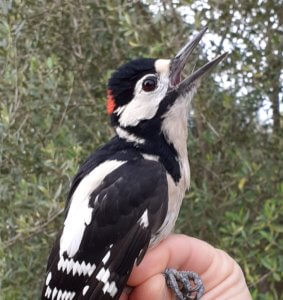 This year’s controls report contains many old Storm-Petrel control. These controls were never sent to the ringing central until now, when Kirsty Franklin took care of it for one of her works. Most of the Storm-Petrels were ringed in the UK but one bird belonged to the Mediterranean subspecies (melitensis) since it was ringed in Spain on the Mediterranean coast. Several birds were at least 10 years old. Flamingos, with 41 controls is the second species with most data. 2020 was the year with most ringed Flamingos seen at Ria de Alvor, mostly because of the 400 bird flock staying at Abicada in August. Most of these birds came from Spain, as usual, and the oldest Flamingo recorded at Ria de Alvor was seen during the year. A Sanderling carrying colour-rings spent the winter in the area, this species is rarely controlled at Ria de Alvor. The first Ospreys controlled in the area were in 2020, unfortunately, one of these birds was found dead. Finally, there are only 2 controls of passerine.
This year’s controls report contains many old Storm-Petrel control. These controls were never sent to the ringing central until now, when Kirsty Franklin took care of it for one of her works. Most of the Storm-Petrels were ringed in the UK but one bird belonged to the Mediterranean subspecies (melitensis) since it was ringed in Spain on the Mediterranean coast. Several birds were at least 10 years old. Flamingos, with 41 controls is the second species with most data. 2020 was the year with most ringed Flamingos seen at Ria de Alvor, mostly because of the 400 bird flock staying at Abicada in August. Most of these birds came from Spain, as usual, and the oldest Flamingo recorded at Ria de Alvor was seen during the year. A Sanderling carrying colour-rings spent the winter in the area, this species is rarely controlled at Ria de Alvor. The first Ospreys controlled in the area were in 2020, unfortunately, one of these birds was found dead. Finally, there are only 2 controls of passerine.
Photos and text by Guillaume Réthoré
If you have any queries please do not hesitate to contact us:
friends.arpt@arocha.org
Or visit us on our open day: Thursdays from 10:15 to 12:00 am
See map: https://arocha.pt/en/contact-us/
GPS coordinates
37°08'39.8"N (37.1444) 8°36'29.2"W (-8.6081)
(+351) 282 968 380
Thank you for supporting us!
Hope to see you soon!







